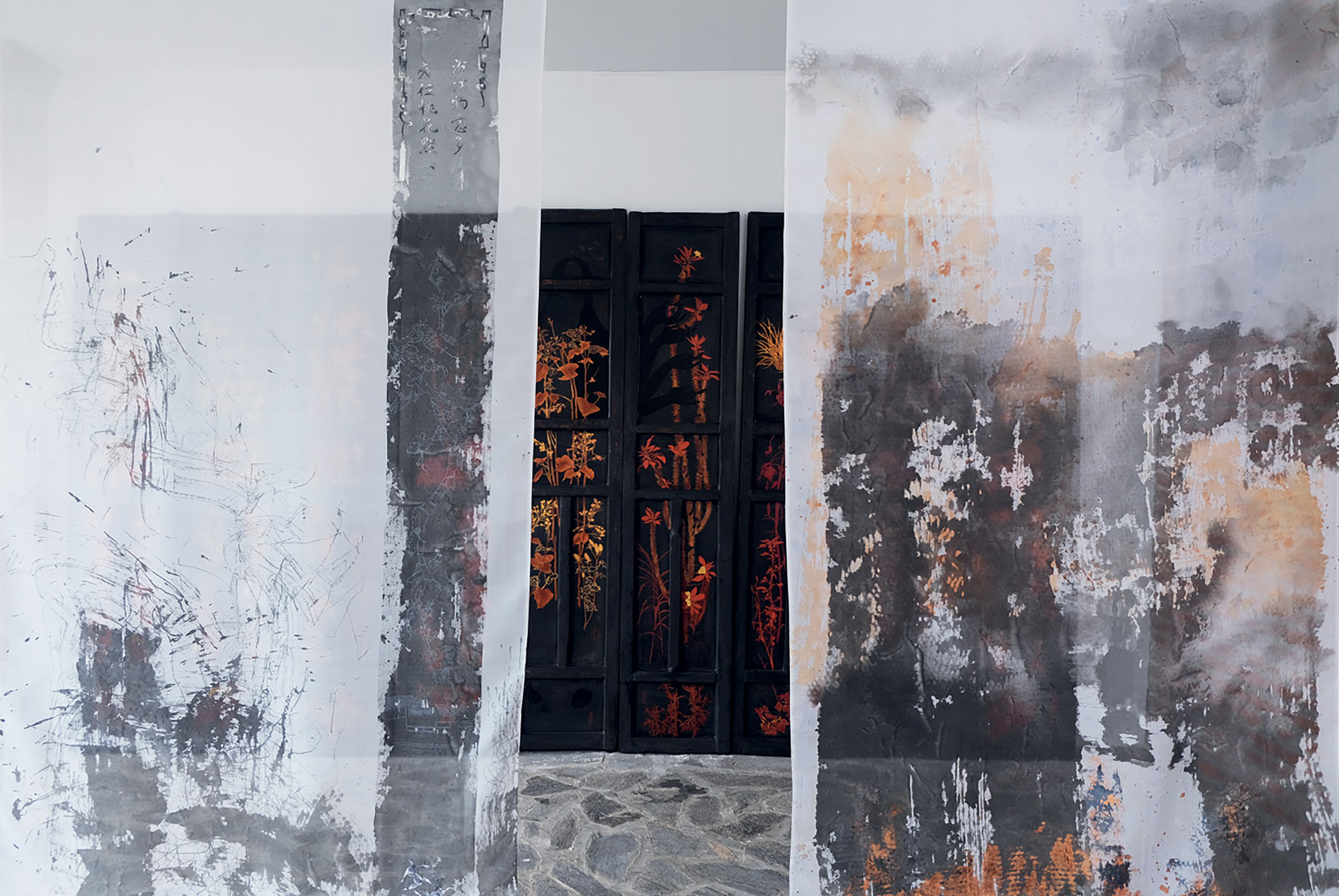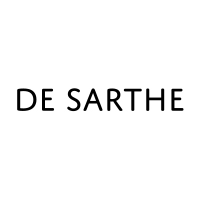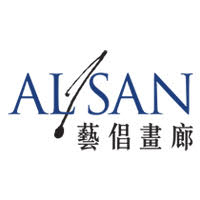New Currents: Lê Thuý
By Annette Meier

LE THUY, Echo, 2022-23, lacquer, gold and silver leaf, mineral pigment on wood (door); ink, calligraphy, synthetic polymer paint and embroidery on silk, dimensions variable. Courtesy Queensland Art Gallery | Gallery of Modern Art, Brisbane.
Lê Thuý
Hoi An
Often misunderstood as antithetical to speech or as the mere absence of sound, silence plays a crucial part in human communication. For the Hoi An-based artist, the complex phenomenon also serves as a repository for emotions, as well as a force of oppression.
In her watercolor-on-silk painting Rumination of life and death (2023), an eerie quietness overtakes the figure of a woman cradling her child beside a wooden table. Their faces inscrutable, the woman and child appear to be in an otherworldly, yellow-green wasteland. The tender depiction of motherhood is further disrupted by the skull on which the infant’s right foot rests, and an unlit ceramic oil lamp ominously positioned on the table. In Vietnamese tradition, lamps are placed on ancestral altars and serve as protection against evil spirits. Without a flame, Lê’s mother and child are at the mercy of their desolate environment, suspended in a soundless realm between life and death.
Lê explores another form of haunting quietude in her The Silence is Deafening series (2020), which features 39 broken đàn bầu (Vietnamese stringed instruments) to represent the Vietnamese migrant workers who, in 2019, suffocated in a lorry that was transporting them through Europe. Using sơn mài, a traditional lacquer painting technique, the artist embellishes each zither with temples and rice fields, among other cultural motifs. In Teardrops (2020), a pale moon floats above mountains—a serene landscape belying the tragic story behind the artwork. In marrying these references, Lê’s zithers offer a space for grief, empathy, and healing, by listening to the voiceless.
Tracing the impact of silence across time and space, Lê created Echo (2022–23), a large, house-like installation, for the 11th Asia Pacific Triennial. The structure comprises old doors adorned with lacquer paintings of humans, animals, plants, and flowers in varying states of decay. The work also features sheer silk curtains, representing fragile dreams and memories; and crumbling, gold-flecked bricks, symbolizing neglect and forgotten values. Though full of grief, Lê’s work reframes silence as a potent form of human expression, persistently offering glimpses of beauty and hope, no matter how fleeting.






